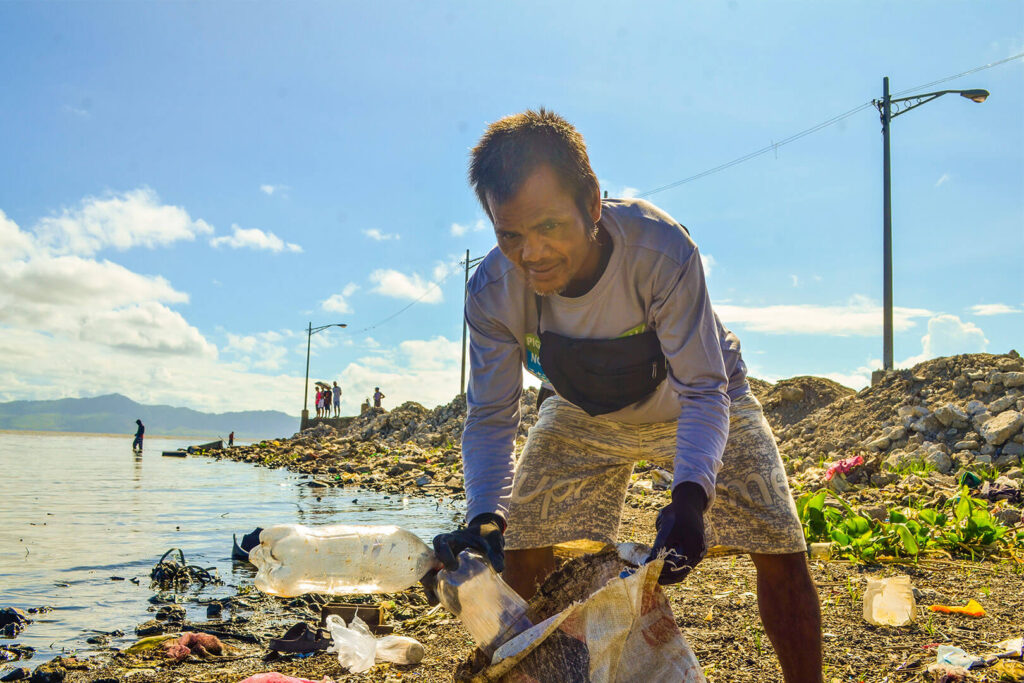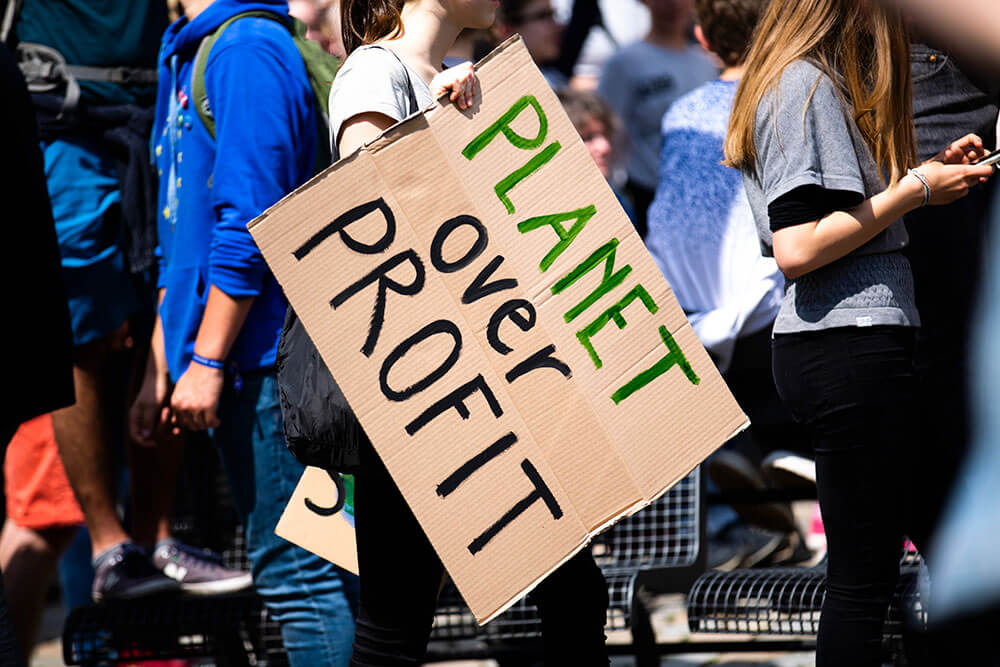 Traceability and Circular Economy
Traceability and Circular Economy
 Photo by 89Stocker on EnvatoElements
Photo by 89Stocker on EnvatoElements
Have you ever heard of the term EPR? How about social EPR or ESG and sustainability? Did you know that these concepts have been evolving since the 80s? In this article, we will explain the basic and crucial factors of why you should take EPR law seriously.
EPR Law: Quick review
The Extended Producer Responsibility (EPR) law has become a powerful environmental policy tool that emerged as a leading option for waste management and resource conservation. Simply, the law champions the shift of responsibility in managing the life cycle of products created back to the producers. This means that businesses who sell products and packaging must be responsible for its disposal and impact on the environment. Hence, EPR promotes sustainable practices by incentivizing producers and manufacturers for their efforts to reduce, recycle and dispose of their waste.
9 factors why you have to prioritize ESG and Sustainability for EPR law
1. Environmental impact reduction
According to a World Bank report, global waste generation is expected to increase by 70% between 2016 and 2050, reaching 3.4 billion tons annually.1 ESG and Sustainability and the EPR law, if implemented correctly and consistently, can significantly reduce the environmental impact of waste.
This level of waste generated is threatening our ecosystems, natural resources, and, most importantly, the health of humans. Studies have shown that microplastics have successfully entered the food chain through fish and other livestock.2 Through the successful implementation of EPR programs, these threats can be curtailed and managed through a collaborative effort of producers, government agencies, and partner institutions.
2. Boosting recycling rates
EPR laws have demonstrated their efficacy in increasing recycling rates in other regions. In the European Union, states gradually implemented EPR mechanisms before full implementation. The first organization to introduce ESG and Sustainability and EPR for plastic packaging was Der Grüne Punkt GmbH in 1990.3 This has gradually extended to different states in various forms of national legislation.
In some nations, only a single organization is compliant, while in other countries there are more than 20 to 30 companies offering EPR services. Furthermore, some countries implement a hybrid mechanism of packaging taxes and waste collection.
Even the scope of waste has widened. Before it was only focused on plastic packaging, but now it has expanded to include waste electrical and electronic equipment, and batteries.
As countries learn from each other through open dialogues and knowledge sharing, the average municipal waste recycling rate became 47% in 2019 as a result of ESG and Sustainability and EPR law implementation.4 This has been replicated in various member states, ensuring producers take responsibility for their environmental footprint.
3. Economic benefits and savings from ESG and Sustainability
Environmental advantages are one of the common benefits that EPR provides – but did you know that EPR also provides huge economic benefits? An Economic Impact Study commissioned by the Institute of Scrap Recycling Industries (ISRI) through John Dunham and Associates in 2021 discovered that the recycling industry has contributed immensely to the US economy by generating 506,000 jobs, $117 billion in the country’s GDP, $35.70 billion impact in export related transactions, and over 130 million metric tons of recycled commodities.5
This potential for job creation and economic growth in the recycling industry is astounding. It encourages more stakeholders to participate in recycling programs. At the same time, successful ESG and Sustainability, and EPR programs reduce the burden on local governments and taxpayers to establish local waste management programs, thereby saving funds.6 In China, the Chinese E-disposal Fund Scheme helps to ease monitoring of the production, sale, and disposal of electronic wastes. Government agencies do not need to invest resources in the EPR implementation since businesses align their technologies and programs with the system of the government.7 At the same time, the fund generated through the premium paid by producers and importers is used in creating more public goods and other green initiatives.
Philippines Local Government Position.
In the case of ESG and sustainability in the Philippines, they are incentivized to comply and better manage the funds they are allocating for solid waste management programs.8 During rainy seasons, governments spend a lot in managing floods caused by clogged drainage due to waste. With a circular economy model that reduces environmental waste, governments can redirect their focus and attention to creating other social goods for their constituents.
In the Philippines, to boost compliance, the Implementing Rules and Regulations of Republic Act No. 11898 was released, highlighting major incentives to producers. Apart from tax incentives, companies receive tax and duty exemptions from donations and gifts, and their EPR expenses are deducted from their gross income. Meanwhile, those who do not comply need to pay PHP 5-20 million worth of penalties, including an automatic suspension of business permit on the third offense.9
4. Promoting a circular economy
ESG and Sustainability, and EPR is crucial in advancing the circular economy. By developing a circular economy for plastic, packaging will be designed to be more durable, repairable, and recyclable. This ensures packaging waste is gradually eliminated in the market. According to the Ellen MacArthur Foundation, a transition to a circular economy could generate $4.5 trillion in economic benefits by 2030.10 Manufacturers do not need to continuously produce new virgin plastic packaging, resulting in huge cost savings for operations. With the demand for new resources being reduced, companies will minimize waste.
5. Reducing plastic pollution
 Manolito is a Plastic Bank collection branch member from Sta. Rosa, Laguna. He exchanges plastic materials as currency for additional income and life-improving benefits.
Manolito is a Plastic Bank collection branch member from Sta. Rosa, Laguna. He exchanges plastic materials as currency for additional income and life-improving benefits.
Plastic pollution is one of the most pressing environmental challenges of our time. The ESG and Sustainability, and EPR law can significantly contribute to reducing plastic waste by making producers accountable for the proper disposal and recycling of plastic products. It is estimated that 11 billion kilograms of plastic enter the ocean each year.11 With the help of EPR programs directed at managing plastic waste, plastic pollution can be greatly reduced.
In the Philippines, Plastic Bank empowers collection communities in areas where plastic pollution and poverty are prominent. Collection communities gather and exchange ocean-bound plastic waste as currency for income and life-improving benefits, including health, work and life insurance, digital connectivity, grocery vouchers, school supplies, fintech services, and more. Exchanges are recorded through the PlasticBank® app, backed by a proprietary blockchain-secured platform that enables traceable collection, secures income and verifies reporting for partner companies. This enables companies to track the impact they are creating across all their green initiatives vis-a-vis EPR law compliance.
6. Encouraging innovation and sustainable product design
ESG and Sustainability, and EPR incentivizes producers to adopt more sustainable product design practices. As producers are held accountable for the environmental impact of their products, they have a stronger incentive to invest in research and development for eco-friendly materials and production methods. This encourages innovation and drives the adoption of greener technologies throughout all industries.
7. Complying with international commitments
Many countries have implemented EPR laws, ESG and sustainability to fulfill their international commitments to environmental agreements and the UN Sustainable Development Goals. Taking EPR seriously not only demonstrates a nation’s commitment to environmental protection but also ensures alignment with global efforts to address environmental challenges and combat climate change.
8. Resource conservation
ESG and Sustainability, and EPR contributes to the conservation of finite natural resources by promoting recycling, material recovery, and the creation of a circular economy. Currently, around 100 billion tons of resources are used to operate the economy and only about 8.6% of which are recycled and repurposed.12 This has tripled the demand for natural resources since 1970.13 Some of the most used natural resources in creating plastic packaging include cellulose, coal, natural gas, salt, crude oil, talc, and wollastonite.14
It will take a long time before these exhausted resources are replenished for future generations. This rampant consumption is not sustainable and has a devastating impact on humans and wildlife. With the innovation brought about by EPR, the demand for raw materials is reduced. Recycling and repurposing help forests and the ocean to naturally recuperate and conserve valuable resources, such as metals, minerals, and fossil fuels.
9. Enhanced product safety and consumer confidence
As producers become more accountable for their product’s life cycle, they will likely prioritize health, safety, and quality in their designs. This can lead to improved product safety standards, reducing the risk of harmful or hazardous materials entering the market. Enhanced safety and transparency in product labeling under ESG and sustainability and EPR can also foster consumer confidence and loyalty.
Moving forward
The Extended Producer Responsibility (EPR) law is a pivotal instrument for achieving environmental sustainability and waste management. By putting the weight of the responsibility on producers, they are forced to adopt better recycling methodologies and sustainable practices, promoting a circular economy.
The ESG and Sustainability, and EPR law also opens many economic opportunities for job seekers as recycling becomes a more formalized source of livelihood.
Lastly, the EPR law is more than just a responsibility, it is a necessary step in safeguarding the health and prosperity of future generations. With many stakeholders seeking to take EPR law more seriously, it is up to us – its champions – to steer a cleaner, greener and resilient future.
Plastic Bank is a social enterprise empowering Social Recycling movement and can help companies be part of the solution to plastic pollution and poverty. Visit our Social EPR website to learn more about how we can help you with your EPR compliance.




